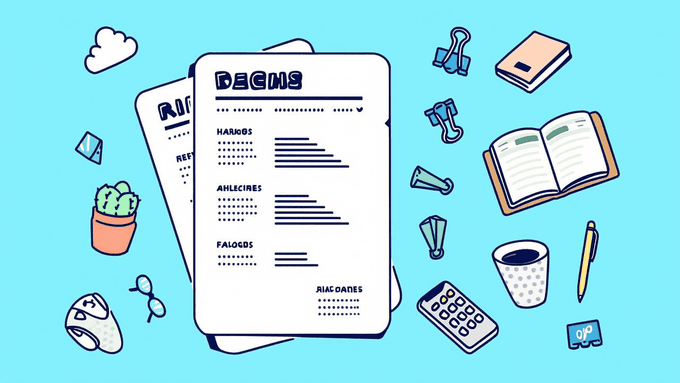Chronological Resume Overview

The chronological resume, also known as the reverse chronological resume, is the most common resume format. It is ideal for individuals with extensive work history, as it emphasizes work experience and achievements from the most recent to the least recent. This format is favored by recruiters because it allows them to quickly assess a candidate's relevant work history.
Structure of a Chronological Resume
A chronological resume has a clear and straightforward structure, with the most recent experience listed first. The key sections typically included are:
- Contact information
- Professional title and resume summary/objective
- Work experience and achievements
- Education section
- Skills (both hard and soft)
- Optional sections (languages, certificates, volunteer experience, etc.)
For recent graduates, the education section can be prioritized, with work experience following in reverse chronological order.
When to Use a Chronological Resume
The chronological resume is the default choice for most job seekers due to its broad acceptance and effectiveness in highlighting relevant work experience. However, alternative formats like the functional or combination resume may be更适合 those with limited work experience or those looking to change careers.
Chronological Resume Templates
Several free chronological resume templates are available, each designed to help job seekers create a professional and effective resume. These templates can be customized to fit individual needs and preferences.
Creating a Chronological Resume
To create a chronological resume, follow these steps:
- Contact Information Section: Include your name, professional title (if applicable), phone number, email address, location, and LinkedIn URL (optional).
- Resume Summary or Objective: A summary provides a brief overview of your career, while an objective focuses on your career goals and skills.
- Work Experience: List your job positions from most recent to least recent, including job title, company, location, and dates of employment. Emphasize achievements and responsibilities, with a focus on quantifiable results.
- Education Section: Detail your educational background, including program name, university, period attended, GPA (optional), honors (optional), and academic achievements (optional).
- Skills: List your hard skills (measurable abilities) first, followed by soft skills (personal attributes).
- Optional Sections: Include additional sections that are relevant to the job position and do not exceed the recommended resume length of 1-2 pages.
Chronological Resume Examples
Chronological resumes can be tailored to various industries. Examples include:
- Business
- Computer Science
- Architecture
- Nursing
- Pharmacy
- Project Management
- Web Development
- Teaching
- Bar Management
- Human Resources
Each example highlights how to showcase industry-specific achievements and qualifications in a chronological format.
Key Takeaways
- The chronological resume is a top choice for candidates with professional experience and is favored by recruiters.
- It focuses on work experience, starting with the most recent.
- Recent graduates can adapt this format by prioritizing their education section.
- Online resume builders can save time and effort in creating a reverse chronological resume.
By following these guidelines and using the appropriate template, job seekers can create a chronological resume that effectively presents their professional history and increases their chances of securing an interview.